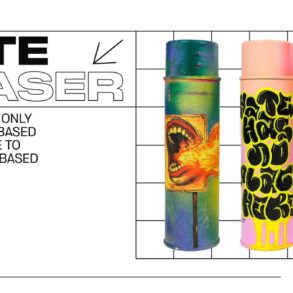
Local artist John Breiner gave a talk to Marist College students on Friday, Nov. 1, titled “Vanishing Playgrounds,” which focused on the thriving graffiti scene that once existed in Poughkeepsie, New York. Hosted by English professor Moira Fitzgibbons, the talk coincided with her First Year Seminar course, “Comics Across the Street.”
During the talk, Breiner, a Hudson Valley native, gave a first-hand account of the graffiti subculture in Poughkeepsie that was active from the late ‘90s to the early 2000s. He explained that “writers,” the term used to describe graffiti artists like himself and others, utilized spaces like abandoned factories and tunnels to create their art.
Bringing together people of different racial and ethnic backgrounds, Breiner stated that the scene unified people through an art form that allowed them to express themselves. He also emphasized that writing allowed him to find a sense of individuality.
“I was doing it because it gave me an identity,” said Breiner.
Briener explained that one of the hotspots for writers was the abandoned Western Printing factory. This former printing facility, which was demolished in 1998 and was located on Route 9, produced paperbacks, calendars, comics and a plethora of other printed items. Remnants of the old Western building can still be seen off of Fulton Street, near the Ocean State Job Lot.
In her First Year Seminar course, Fitzgibbons explores this abandoned factory and the cultural significance it once had on the Poughkeepsie community, thus resulting in the course title of “Comics Across the Street.”
“I thought it would be interesting for students to just think about this disappeared entity that was there and employed, at one point, 1,500 people,” said Fitzgibbons.
After reading Breiner’s book “Power Kingdom: Graffiti in Poughkeepsie, N.Y.” and eventually meeting Breiner at the Poughkeepsie Open Studios tour last year, Fitzgibbons became fascinated with the history of the building and decided to create a course based on it to engage students with Poughkeepsie history and the broader community.
“This was an artist that I had met because he self-published this book about graffiti in Poughkeepsie, and I was interested in art that is specific not just to the Hudson Valley, but to Poughkeepsie in particular,” said Fitzgibbons. “And here he was, and he had put together and archived this whole ephemeral graffiti forum.”
A copy of Breiner’s book circulated throughout the room during the talk, and in it, Breiner uses his own personal collection of photographs to illustrate the scene and highlight the talented artwork of Poughkeepsie writers. A majority of these images came from the old Western Printing building, where writers came together and filled the abandoned walls with their intricate designs.
Another interesting concept explored by Breiner during the talk — and something that Fitzgibbons talks about in her course — is ephemeral art. By definition, ephemera means something that only exists for a short amount of time.
“At the most basic level, when you’re talking even just about the collectibles industry, there’s this whole category called ‘ephemera,’ and it’s like matchbooks, programs, handouts, posters and comics are considered part of that. Printed stuff that no one was treating as an important legal document,” said Fitzgibbons.
This concept can be applied to art, and graffiti is something that gets categorized as ephemeral, as the artists know that their work will not last forever.
“Graffiti seems to be part of that ethos, even though there are legal issues and sociological issues associated with graffiti. From what John was saying, it really sounds like it’s just this idea of making something beautiful, even if it’s not going to last.”
During his talk, Breiner stated that he and other fellow writers knew that their work would not stand the test of time, but they created it out of pure love for the art.
“I just think that’s kind of interesting to think about, almost embracing the sort of fleeting nature of something beautiful,” said Fitzgibbons.
Breiner also mentioned that because he knew his work would not last forever, he was more inclined to photograph and document his designs and those of others and was able to make an archive of what once took up space on abandoned walls.
“The value system we’re really hearing from John was something else, something you do just for the love of it,”said Fitzgibbons.
Fitzgibbons hopes that this talk and the contents of her course motivate students to branch out and familiarize themselves with the local community and to get outside the Marist bubble.
“You’re in Po-Town! You’re a temporary Pocal! So, why not embrace it? It’s actually a pretty fascinating place,” said Fitzgibbons.
Breiner’s knowledge of the artistic and cultural history of Poughkeepsie was evident during the talk. He allowed those in attendance to learn something new about the community they are part of and encouraged people to open their eyes and observe the world around them a bit more.
This post was originally published on this site be sure to check out more of their content.



